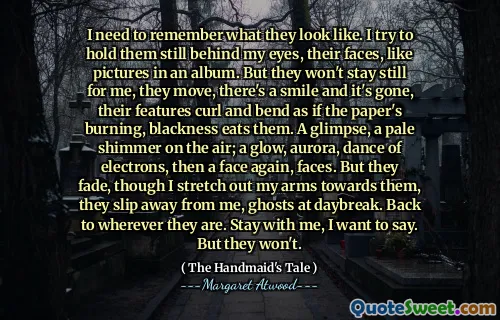I can't think of myself, my body, sometimes, without seeing the skeleton: how I must appear to an electron. A cradle of life, made of bones; and within, hazards, warped proteins, bad crystals jagged as glass.
In Margaret Atwood's "The Handmaid's Tale," the speaker reflects on their perception of physical existence, emphasizing an almost scientific view of the body. They associate their being with the skeleton, suggesting that at a fundamental level, the body is a mere structure, viewed through the lens of an electron. This perspective highlights the fragility of life, where the bones serve as a framework made vulnerable by internal hazards.
The mention of "warped proteins" and "bad crystals" conveys a sense of imperfection and instability within the body. The imagery evokes a feeling of existential dread, where the body, while housing life, is also a site of potential danger. Through these thoughts, Atwood explores themes of existence, identity, and the complexities inherent in the human condition.






